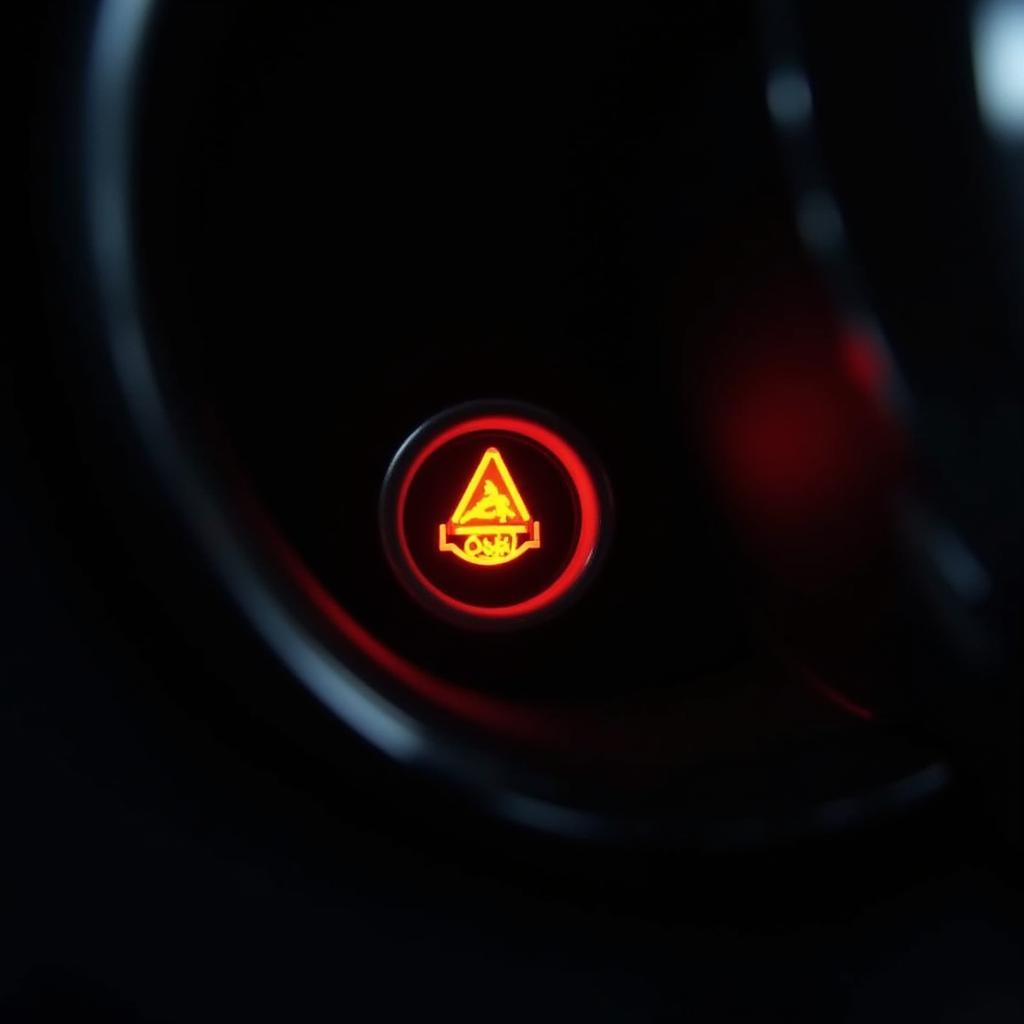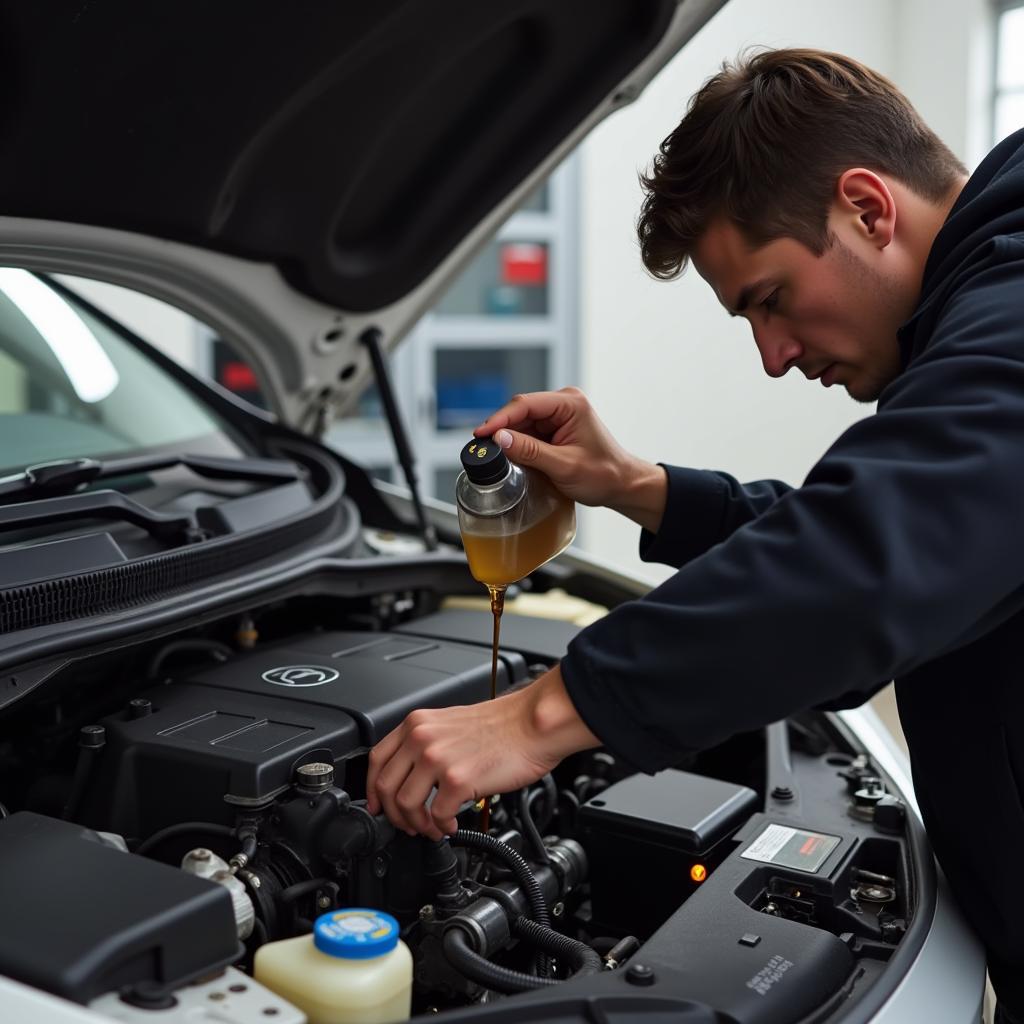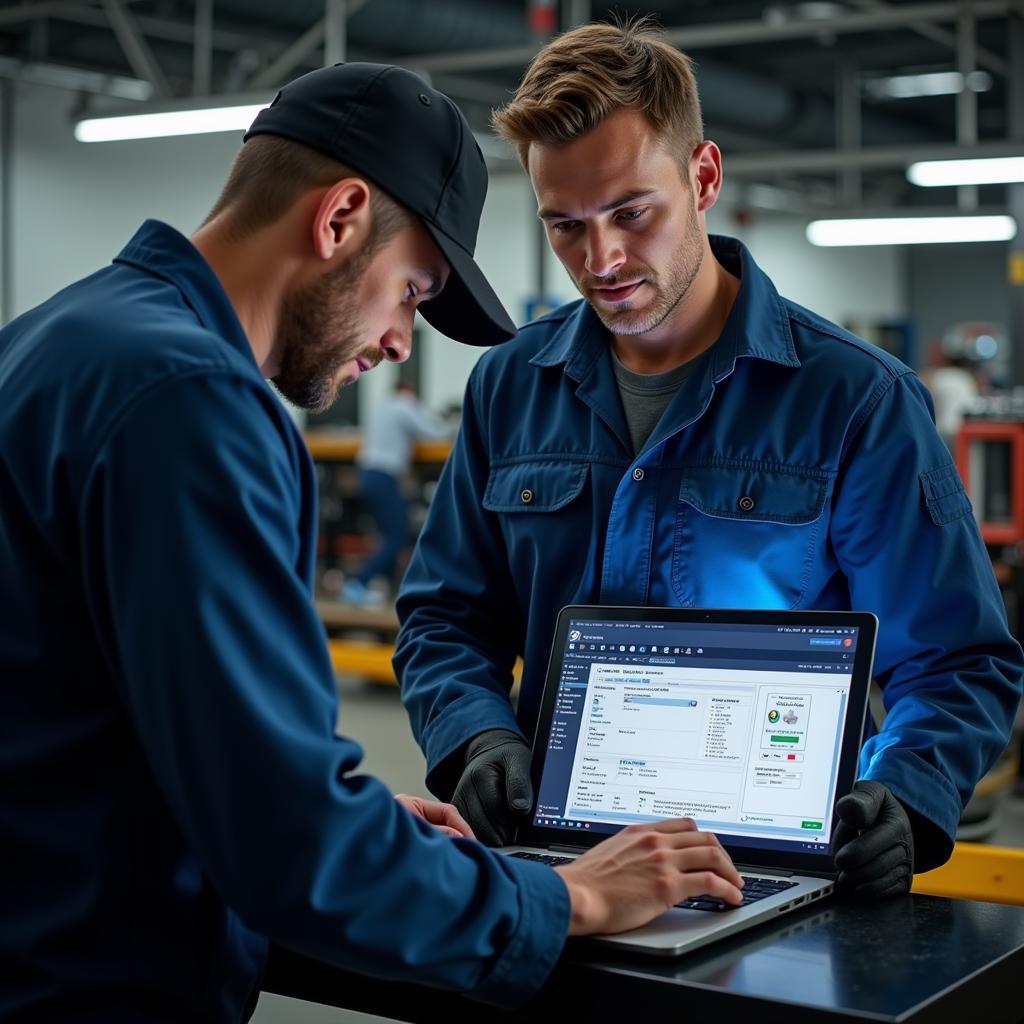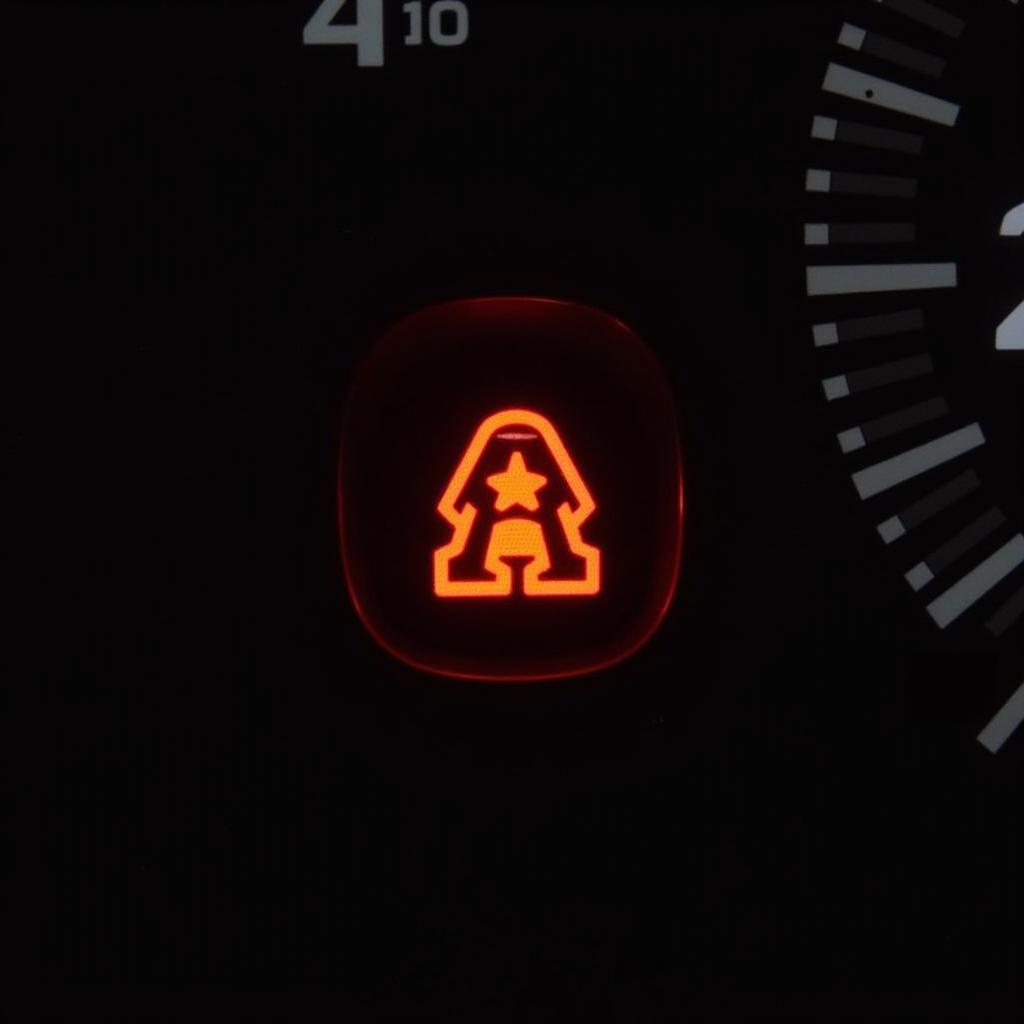A brake warning light illuminated on your dashboard is a clear sign that something is wrong with your vehicle’s braking system. Ignoring this warning could be dangerous, leading to reduced braking performance and potentially an accident. This comprehensive guide will help you understand the common reasons behind a brake warning light, potential solutions, and when to seek professional help.
 Brake warning light illuminated on car dashboard
Brake warning light illuminated on car dashboard
Understanding Your Vehicle’s Braking System
Modern vehicles utilize sophisticated braking systems that are essential for safe operation. Here’s a simplified look at the key components:
- Hydraulic System: This system uses brake fluid to transmit force from the brake pedal to the wheels, enabling you to slow down or stop the vehicle.
- Brake Pads and Rotors (Disc Brakes): Most vehicles utilize disc brakes on the front wheels and often on all four wheels. When you press the brake pedal, brake pads clamp down on the brake rotors to create friction and slow the vehicle.
- Brake Drums and Shoes (Drum Brakes): Some vehicles, particularly older models, use drum brakes on the rear wheels. Instead of rotors, drum brakes use brake shoes that press outwards against a drum to generate braking force.
- Electronic Parking Brake: Many modern vehicles have replaced the traditional hand-operated parking brake with an electronic version. This system utilizes an electric motor to engage the parking brake.
Common Causes of a Brake Warning Light
A brake warning light can illuminate for several reasons. Here are some of the most common culprits:
- Low Brake Fluid Level: This is one of the most frequent causes of a brake warning light. Low brake fluid level often indicates a leak in the hydraulic system.
- Worn Brake Pads: Brake pads have wear indicators that will activate the brake warning light when they become too thin, signaling the need for replacement.
- Faulty Brake Light Switch: The brake light switch activates your brake lights when you press the pedal. A malfunctioning switch can trigger the brake warning light.
- ABS (Anti-lock Braking System) Issue: Modern vehicles are equipped with ABS, which helps prevent wheel lockup during hard braking. A problem within the ABS system, such as a faulty sensor, can illuminate the warning light.
- Parking Brake Engaged or Malfunctioning: Leaving your parking brake even partially engaged or experiencing a malfunction with the electronic parking brake system can cause the brake warning light to come on.
 Mechanic checking brake fluid reservoir
Mechanic checking brake fluid reservoir
What to Do When Your Brake Warning Light Turns On
- Stay Calm and Assess the Situation: Don’t panic! If the brake warning light illuminates while driving, safely pull over to the side of the road when it is safe to do so.
- Check Your Parking Brake: Ensure your parking brake is fully released. If it was engaged, disengaging it might extinguish the light.
- Inspect Your Brake Fluid Level: If you feel comfortable doing so, carefully check the brake fluid level in the reservoir under the hood. If the level is low, adding brake fluid might temporarily resolve the issue, but it’s crucial to have a mechanic diagnose the underlying cause of the fluid loss.
- Evaluate Brake Pedal Feel: Pay attention to how the brake pedal feels. If it feels spongy, goes all the way to the floor, or requires significantly more pressure than usual, it could indicate a serious problem.
- Seek Professional Help: If the brake warning light remains illuminated, or if you notice any unusual brake pedal behavior, it’s crucial to seek immediate professional assistance from a qualified mechanic.
The Importance of Timely Diagnosis and Repair
Attempting to diagnose or repair brake issues without proper knowledge and experience can be dangerous. The braking system is critical for your safety and that of other drivers on the road. Professional mechanics have the expertise, tools, and diagnostic equipment necessary to accurately identify and address brake problems.
Remote Diagnostic and Programming Solutions
In the age of automotive technology, remote diagnostic and programming services offer a convenient and efficient approach to resolving certain brake warning light issues. By connecting to your vehicle remotely, specialized technicians can:
- Read Diagnostic Trouble Codes: Accessing your vehicle’s onboard computer allows technicians to retrieve diagnostic trouble codes that provide insights into the specific areas of concern within the braking system.
- Analyze Live Data Streams: Monitoring live data streams from various sensors in the braking system, such as wheel speed sensors and brake pressure sensors, can help technicians pinpoint the root cause of the problem.
- Perform Software Updates: In some instances, a brake warning light might be triggered by outdated software in your vehicle’s electronic control units (ECUs). Remote programming allows technicians to install the latest software updates wirelessly, potentially resolving software-related issues.
 Mechanic using laptop for remote diagnostics
Mechanic using laptop for remote diagnostics
Expert Insights
“Ignoring a brake warning light is like ignoring a flashing red light at a busy intersection,” says Alex Turner, a seasoned automotive electrical engineer specializing in remote diagnostics. “It’s crucial to address any brake warning light issues promptly to ensure your safety and the optimal performance of your vehicle.”
Preventing Future Brake Problems
- Regular Brake Inspections: Schedule routine brake inspections with a qualified mechanic, typically every 12,000 to 15,000 miles or as recommended in your vehicle’s owner’s manual.
- Quality Brake Pads and Rotors: When it’s time for brake pad replacement, opt for high-quality parts from reputable manufacturers.
- Brake Fluid Flushes: Have your brake fluid flushed and replaced according to your vehicle manufacturer’s recommended maintenance schedule. This helps maintain optimal hydraulic system performance and prevents internal corrosion.
- Mindful Driving Habits: Avoid aggressive braking and anticipate stops whenever possible.
Conclusion
A brake warning light is a serious signal that should never be ignored. Understanding the common causes and taking appropriate action can help prevent further damage, costly repairs, and potentially dangerous situations. Whether it’s a simple fix like topping off brake fluid or a more complex issue requiring professional attention, addressing brake problems promptly is essential for ensuring your safety and the well-being of your vehicle.

